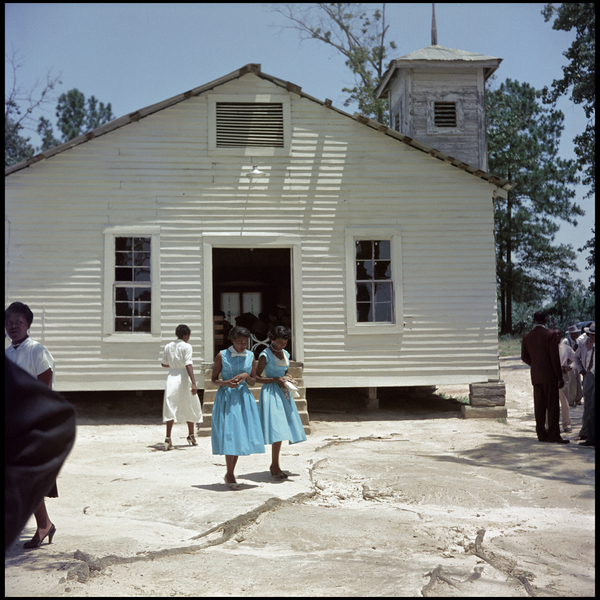
In September 1956 Life published a photo-essay by Gordon Parks entitled “The Restraints: Open and Hidden” which documented the everyday activities and rituals of one extended African American family living in the rural South under Jim Crow segregation. One of the most powerful photographs depicts Joanne Thornton Wilson and her niece, Shirley Anne Kirksey standing in front of a theater in Mobile, Alabama, an image which became a forceful “weapon of choice,” as Parks would say, in the struggle against racism and segregation. While twenty-six photographs were eventually published in Life and some were exhibited in his lifetime, the bulk of Parks’s assignment was thought to be lost. In 2011, five years after Parks’s death, The Gordon Parks Foundation discovered more than seventy color transparencies at the bottom of an old storage bin marked “Segregation Series” that are now published for the first time in The Segregation Story.
Link to Steidl
EXCERPT
It was ever the case that we were the beneficiaries of that old African saying: It takes a village to raise a child. The adults in our lives who constituted the village were our parents, our neighbors, our teachers, and our preachers, and when they couldn’t give us first-class citizenship legally, they gave us a first-class sense of ourselves. We could not drink from the white water fountain, but that didn’t stop us from dressing up in our Sunday best and holding our heads high when the occasion demanded. Again, Gordon Parks brilliantly captures that reality. Not long ago when I talked to a group of middle school students in Brooklyn, New York, about the separate “colored” and “white” water fountains, one of them asked me whether the water in the “colored” fountains tasted different from the water in the white ones.
As with the separate water fountains and toilets—if there were any for us—there was always something to remind us that “separate but equal” was still the order of the day. In Atlanta, for example, black people could shop and spend their money in the downtown department stores, but they couldn’t eat in the restaurants. And many is the time my mother and I climbed the long flight of external stairs to the balcony of the Fox theater, where blacks were forced to sit. Some people called it “The Crow’s Nest.” While I never knew of any lynchings in our vicinity, this was also a time when our non-Christian Bible, Jet magazine, carried the story of fourteen-year-old Emmett Till, murdered in the Mississippi Delta in 1955, allegedly for whistling at a white woman. It was far away in miles, but Jet brought it close to home, displaying images of young Emmett’s face, grotesquely distorted: after brutally beating and murdering him, his white executioners threw his body into the Tallahatchie River, where it was found after a few days. The pictures brought home to us, in a way we had not known, the most evil side of separate and unequal, and this gave us nightmares. And somehow, I suspect, this was one of the many things that equipped us with a layer of armor, unbeknownst to us at the time, that would help my generation take on segregation without fear of the consequences. . .
The images Gordon Parks captured in 1956 helped the world know the status quo of separate and unequal, and recorded for history an era that we should always remember, a time we never want to return to, even though, to paraphrase the boxer Joe Louis, we did the best we could with what we had. Our young people need to know the history chronicled by Gordon Parks, a man I am honored to call my friend, so that as they look around themselves, they can recognize the progress we’ve made, but also the need to fulfill the promise of Brown, ensuring that all God’s children, regardless of race, creed, or color, are able to live a life of equality, freedom, and dignity.
Charlayne Hunter-Gault
Excerpt from “Doing the Best We Could With What We Had,” Gordon Parks: Segregation Story























